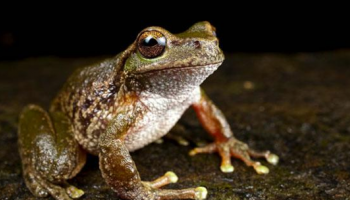It must have been great to be Neil Armstrong. You would have been able to make as many bad jokes about the moon as you wanted, and when nobody laughed, you could just sigh and say ‘Well…I guess you just had to be there.’
We bid farewell to our first man on the moon about a month ago, and along with his passing we’ve begun to remember what once drove humanity to put him there. Once upon a time, we saw the universe beyond our little planet as the great ‘final frontier’, with families huddled around black and white TVs to watch the moon landing. For a while in more recent times, it seemed as though we had completely lost our fascination with space exploration. However, in the past few months, the moon, Mars and space aliens have firmly put themselves back into our cultural consciousness. Neil would no doubt be glad.
Luckily for Neil, he did manage to live just long enough to see another giant leap for mankind. In a bit of a departure from Neil’s famous words, however, it was not quite one small step for man, but rather the whirring of the wheels for the robotic Mars Rover, Curiosity.
Curiosity landed on Mars in early August. NASA is hoping to find out whether Mars could ever have supported life and if there is evidence of water, and record other geological and climatic information. All of this will hopefully lead us to the day when I can buy my very own buggalo ranch on Mars. President Obama has even specifically instructed the NASA team, “If you make contact with Martians, please let me know right away.” Let’s keep our fingers crossed. Curiosity is about the size of a car, with a hardy set of wheels (no spinning rims, unfortunately) and numerous scientific instruments to record information, including 17 cameras.
NASA has truly embraced the information age, setting up a much-loved twitter account for Curiosity (@MarsCuriosity, if you’re interested). Someone good is clearly behind it; with tweets like “A shout out to my 1 million+ followers: There may be a 14-minute communication delay btwn Mars & Earth, but you’re always in my <3”, I’m about ready to fly straight up to Mars and cuddle the life out of that robot. We love to anthropomorphise machines, and Curiosity is no exception – it’s even tweeted some selfie pics, just like in the MySpace days of yore. NASA is on the money with this one. People love a good character, and getting people to fall in love with the personality of their robot explorer is a great way to re-ignite the passion we used to have for space travel.
It’s not just bad jokes that Curiosity is tweeting, though – it has also managed to take some of the most breathtaking HD photos of Mars ever seen. We can now see the stark red terrain of Mars like never before. When I first opened the pictures of barren landscapes with rocks and Olympus Mons in the background, my immediate reaction was, “it just looks like another desert, whatever.” Then it hit me. We can see PHOTOGRAPHS of another PLANET – high-res! Full detail! There’s no kid with an overpriced Canon SLR that can match that. Find them and look at them if you haven’t already – it will make your day. This sense of awe is what space exploration has always been about.
I’m very glad that people are beginning to fall in love with space again. Myki cost us $1.5 billion; in comparison, Curiosity cost a total of only $2.5 billion. Space travel is truly a worthy scientific frontier and deserves investment. Curiosity might not find life, but it will tell us so much more about our nearest neighbour. Who knows, maybe there’s a little kid out there, watching as the photos and the tweets stream in, who will one day be the first person to walk on Mars.


